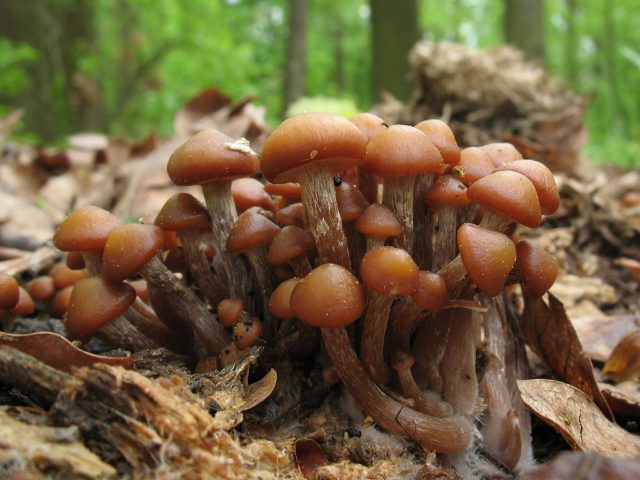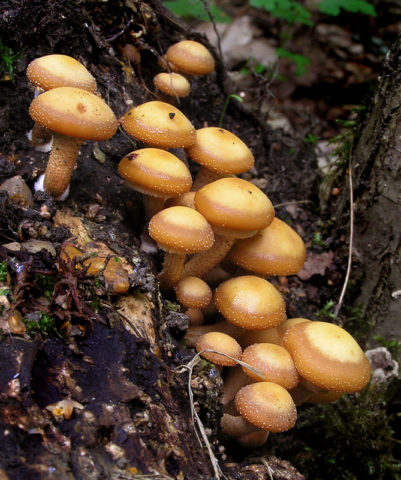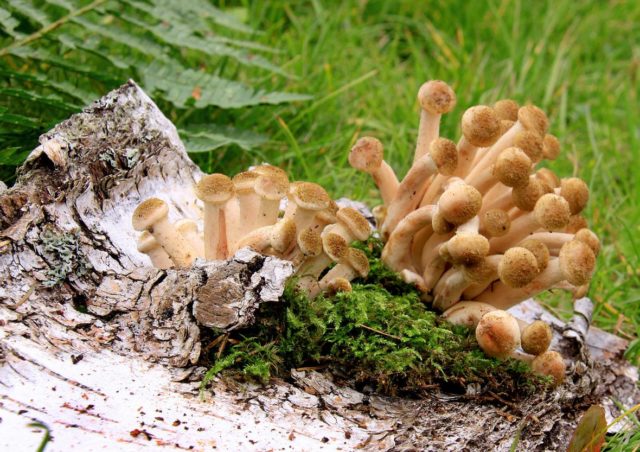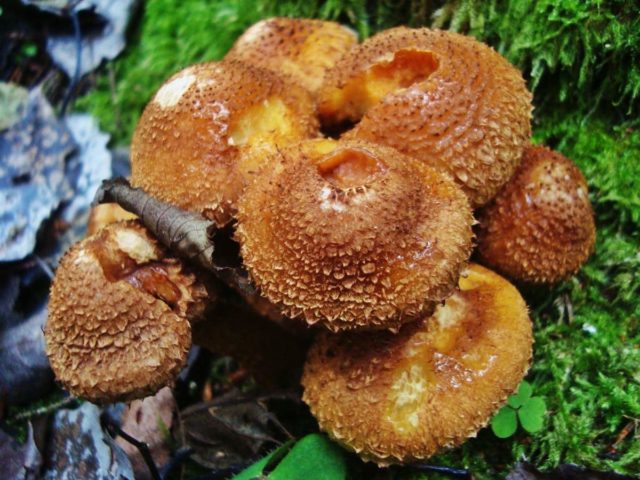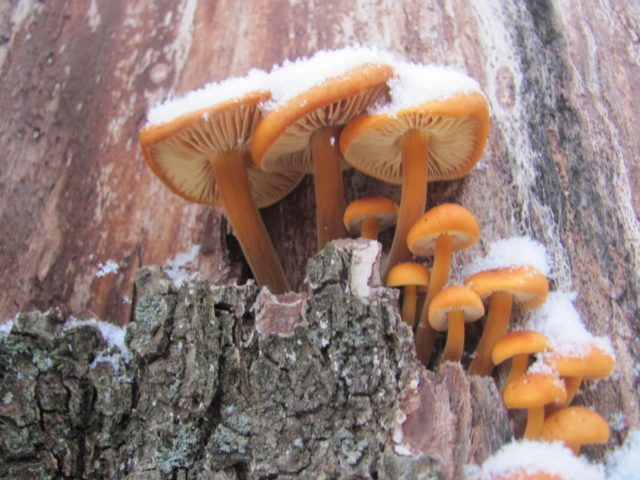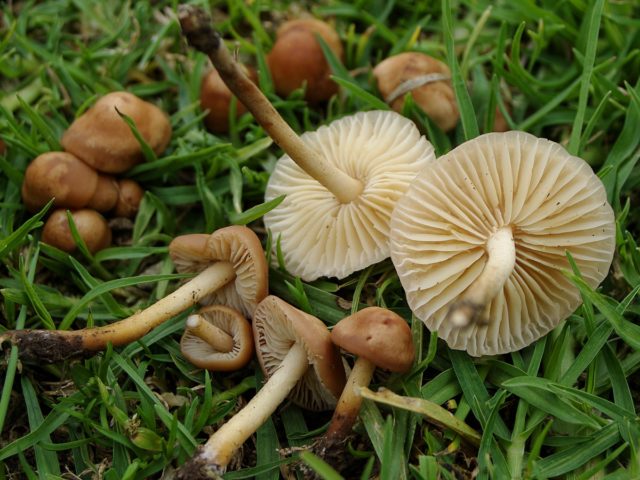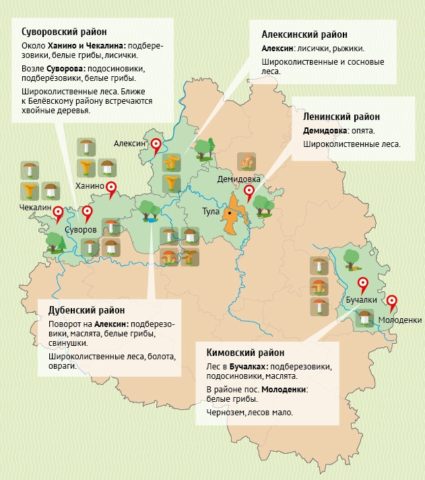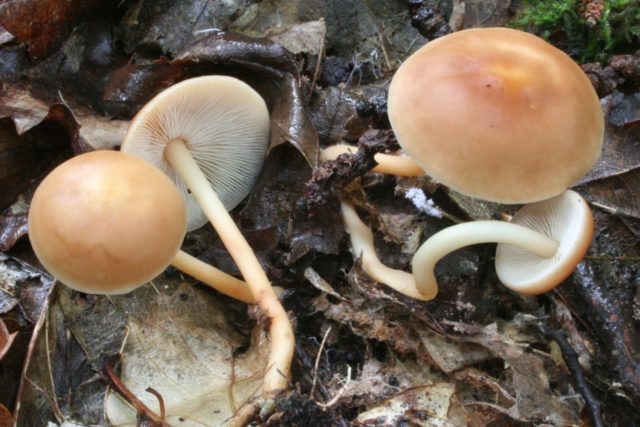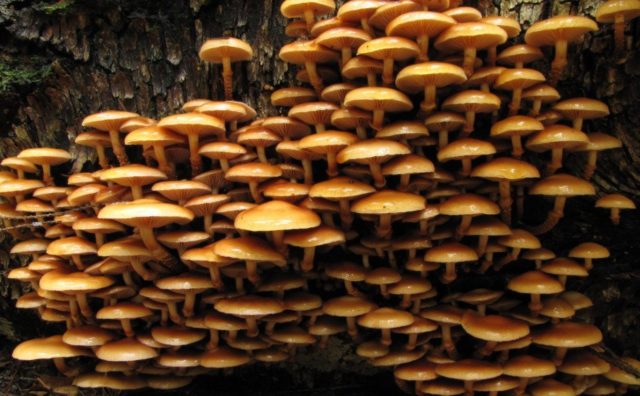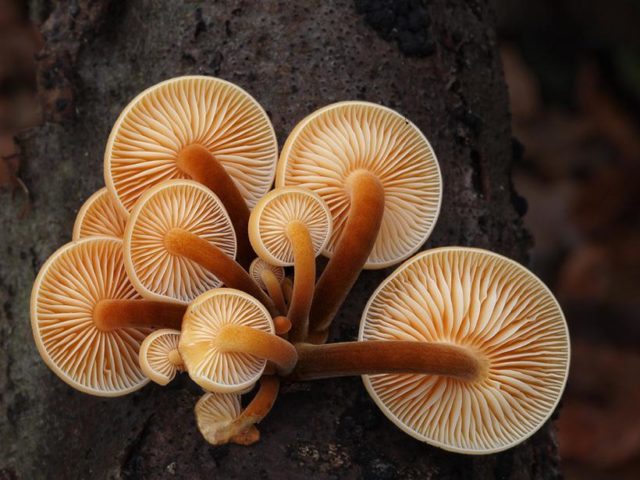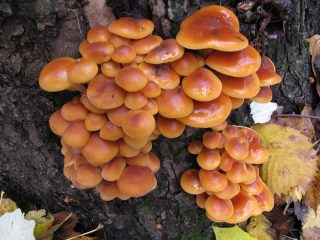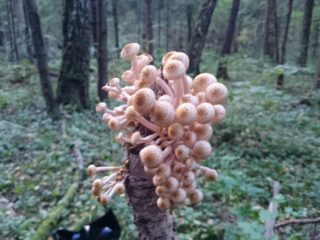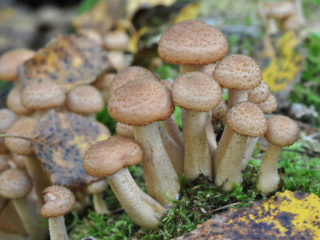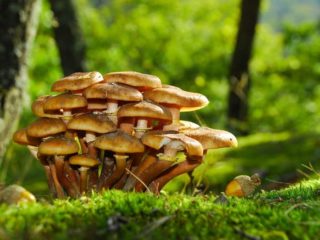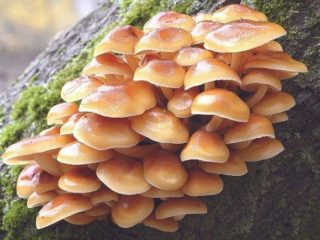Content
Mushroom places of honey agarics in the Tula region can be found in all forests with deciduous trees. Honey mushrooms are classified as saprophytes, so they can only exist on wood. Forests with dead wood, old stumps and weak trees are ideal places to grow. The area, which is part of the Tula region, is famous for mixed forests, where oak, aspen, birch, ash are found - the wood on which the appearance of honey agarics is celebrated.
Types of edible honey agarics in Tula and the Tula region
The presence of forests and the peculiarities of the regional climate fully meet the biological needs of the species. The distribution in the territory of mixed forests with a variety of tree species promotes the growth of fungi. Honey mushrooms in the Tula region do not differ in appearance from specimens common throughout the temperate climate. The main difference is in the method of growth and the time of formation of the fruiting bodies.
The collection begins with the appearance of spring specimens, which include the wood-loving colibia. Its first colonies appear in April-May, after spring rains, when a stable above-zero temperature is established. Near oak or aspen trees are harvested from mid-May.
The fruiting body has a dark brown, hygrophane cap and a long fibrous stem. The mushroom is small in size, forms numerous families.
Then, in the Tula region, the season of summer mushrooms begins in honey agaric; changeable kuneromicess is popular with mushroom pickers.
Grows on the remains of trees, prefers linden or birch. Fruiting is abundant, but short, the mushroom season in the region for summer representatives lasts no more than 3 weeks.
Fruiting in real autumn mushrooms differs in duration. The first families appear at the end of summer.
In Tula, honey mushrooms grow in waves, the initial period lasts within two weeks, followed by the next, with the same duration, the last crop is harvested with the onset of cold weather. They grow on the remains of any type of wood, except coniferous. They settle on trunks near the root system of old and weak trees.
Fat-legged honey fungus is also referred to as an autumn variety; you can collect these honey agarics in Tula from the end of summer. Their congestion is observed near pines or firs. They grow on woody debris covered with needles.
It is a dark brown mushroom with a thick, short stem and a scaly cap surface.
No less popular is the winter look - velvety-footed flammulina.
It parasitizes on damaged trees (willow or poplar) that grow near water bodies. Occurs on decaying wood in park areas. A variety with a pronounced taste and smell. The surface of the cap is covered with a mucous membrane, the color of the fruit body is dark orange. In the Tula region, this is the only mushroom that is harvested in winter.
Meadow species or talker is in no less demand than forest representatives.
It grows in rows or in a semicircle in forest glades, among low-growing shrubs, in pastures. Fruiting begins in spring and lasts until autumn, mushrooms appear after heavy rains.
Where honey mushrooms grow in the Tula region
The main accumulation of honey agarics is noted in the northern and north-western direction of the region. There are forests with linden, birch, aspen, oak. To the south, on the border with the steppe regions, there are mixed forests with a predominance of ash and oak. These places are ideal for mushrooms.
Where in Tula you can collect honey mushrooms
Honey mushrooms in the Tula region can be collected in any area where there are mixed forests. The territory (except for the suburbs) is ecologically clean, with fertile soil, so mushroom picking is unlimited. Places popular with mushroom pickers where all species grow:
- Teplo-Ogarevsky district near the village of Volchya Dubrava. Shuttle buses "Tula-Efremov" go from Tula.
- Venevsky district, village Zasechny. It is 4 km away from Karnitskie notches, famous for the whole region places where all mushroom species grow. You can get from Tula by private transport in 2 hours.
- The famous forest near the town of Aleksino, you can get there by rail.
- The forests of the Suvorovsky, Belevsky and Chernsky regions are considered environmentally friendly.
- Kimovsky district in the forest near the village of Bugalki.
- The mixed forests of the Yasnogorsk region are famous for their winter views.
- In the Dubensky district, large yields of meadow mushrooms are harvested in ravines and wetlands.
Forests with honey mushrooms in the Tula region and Tula
Gaining a good harvest of honey agarics in the Tula region in the protected forests "Tula Zaseki" and "Yasnaya Polyana". The Tula forestry is also famous for the places where species grow en masse. Forests for "quiet hunting" are located in the districts Prioksky, Zasechny, Odoevsky. Forests - Central forest-steppe, Southeast, North.
Where autumn mushrooms grow in the Tula region and Tula
If autumn mushrooms went en masse in Tula, they are sent to the following areas:
- Dubensky, where oaks and birches grow;
- Suvorovsky, to the settlements of Khanino, Suvorovo, Chekalino;
- Leninsky, to Demidovka in deciduous forests;
- Shchelkinsky - an array near the village of Spitsino.
And also to the village of Ozerny City District of Tula.
When will honey mushrooms go in the Tula region in 2021
In 2021, in the Tula region, honey mushrooms can be collected throughout the year, because each species grows at a certain time. Since the winter was snowy and the soil received enough moisture, and the spring is early and warm, so the collection begins in May. Favorable weather with precipitation contributes to the appearance and abundant growth of summer mushrooms. The year is predicted to bring a good harvest of autumn species.
Spring
Spring honey is not as popular as autumn or summer species. Novice mushroom pickers mistake the wood-loving colibia for false doubles, unusable. They are inferior in taste to ordinary honey, but are suitable for any processing. The first specimens in the Tula region appear at a time when the temperature does not drop below -7 0C (late April). They grow in groups on moss or leaf litter, preferring to be located near oak trees.
Summer
Summer mushrooms in the region begin to grow from the second half of June. In the years that are fruitful, the kyuneromycess is changeable, more than three buckets can be collected from a small area. They grow in large families on aspen and birch remains. Harvesting lasts until September.
Season of autumn honey agarics in the Tula region
In 2021, the collection of autumn mushrooms in the Tula region is planned to begin in mid-August. Summer is not dry, with normal precipitation, with the first drop in temperature, harvesting will begin in all directions of the area where forests are located. The harvest this year promises to be abundant. There were few mushrooms last season. If we consider that the level of fruiting is characterized by decline and rise, then 2021 will delight mushroom pickers. You can find out that autumn mushrooms have gone to Tula by the warm rains that have begun.
Timing of collecting winter honey agarics
The velvety-footed flammulina grows when the autumn mushroom picking season is over. In the Tula region, the first specimens are found in November on tree trunks, bear fruit abundantly until the temperature drops to -10 0C.Then they stop growing and resume the formation of fruit bodies during the thaw, approximately in February.
Collection rules
Experienced mushroom pickers do not recommend going into the forest in an unfamiliar area alone.
They do not pick mushrooms near Tula, because there are many factories and factories in the city that affect the environment.
How to find out if mushrooms went to the Tula region in 2021
Honey mushrooms begin to grow actively only at high soil moisture and temperature conditions:
- not lower than +12 in spring 0C;
- in summer +23 0C;
- in autumn +15 0C.
In a dry summer, there is no need to wait for a high harvest. Spring and summer mushrooms grow after rains at a constant air temperature. The fact that autumn mushrooms went en masse in the Tula region is determined by the precipitation map for 2021. After the rains, fruiting bodies are formed in 3 days. The mass harvest falls on warm days, when there is no sharp drop in temperature at night.
Conclusion
Mushroom places of honey agarics in the Tula region are located in all directions, where mixed and deciduous forests grow. It is possible to collect honey mushrooms in the Tula region in 2021 from April until late autumn, even the first snow is not an obstacle for a quiet hunt. The harvest is found on stumps, fallen trees, in the area of openings on the remains of felled trees. The fruiting time for each species is specific, in total, the season lasts the whole year.
